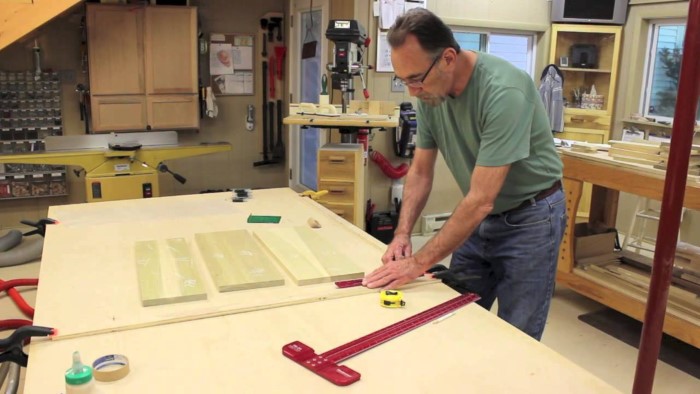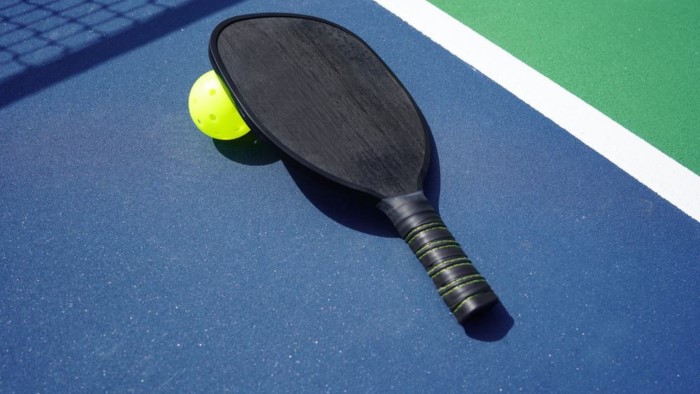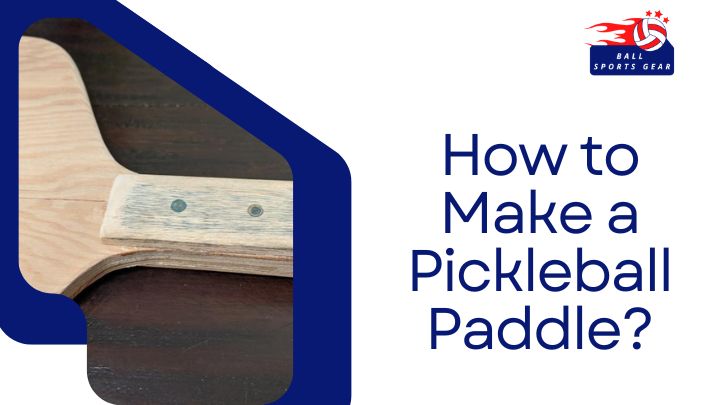In choosing a paddle, you have to consider more than what Bob or Sally plays with or what colors look good on you. To get the job done, you need the right tool. Players who understand their game and the characteristics of the materials that make their paddle play a certain way are better equipped to perform at their peak. By understanding cores, surfaces, weights, and handles/grips, you can build the paddle that will elevate your game. A confident player is likelier to perform well on the court when using equipment they trust!
This can overwhelm many players new to CUSTOM versus “off-the-shelf.” While some players may decide based on the CORE and SURFACE descriptions on our Product Tri-Folds, others may need to try them out to see what FEELS RIGHT.
How to Make Pickleball Paddles?
It is sometimes difficult for players to satisfy themselves with readymade paddles. As a result, they prefer making their own paddles, which is more budget-friendly, as well. The following tips will assist you in how to make pickleball paddles and also you will get an idea of how to make a pickleball paddle cover.
Create a Pickleball Paddle Template
Do you know how to draw a pickleball paddle? To get started, you need to create a template. For instance, you can draw your paddle on a piece of paper with proportions for the height and width. Make corrections repeatedly to have the template’s perfect shape and size. Or, to make it easier, print it out on a large enough piece of paper (11X17 should work) to extent necessary for your paddle. if you have more confusion about pickleball paddle, simply check how to choose a paddle in pickleball.
Pickleball Paddle’s Material and Thickness
Choose your paddle material and thickness. There is no restriction on consistency, but 3/8″ is a standard measurement. All DYI paddles we’ve seen are made of wood. Most are made from 5 or 7-layer plywood, although some are constructed entirely from wood. A high-tech material like a sheet of nomex or an aluminum honeycomb with a graphite or fiberglass face may delaminate without a strong edge guard. Finding these high-tech materials is very challenging and expensive. We recommend sticking with wood for homemade paddles and pickleball paddle weight guide to information about weight guide.

Cut Template and Handle
Using a scroll saw, I cut out the main paddle shape from a scrap piece of 3/8″ plywood. Officially speaking, it seems like just about any form is allowed, as long as the combined length and width don’t exceed d 24″, and the paddle length doesn’t exceed 17″.
I fashioned a handle from an old hockey stick I found in the garage. 6″ does the trick for my hand. I cut a notch down the center of the handle, where the paddle slips in. I used a hacksaw for the cut, then cleaned it up with a flat file.
Removing the Template
As a next step, you will need to remove the template from the paddle. This can be accomplished by polishing, squeezing, peeling, begging, or swiping.
Start Sanding
Once removed, you can start by sanding the surface and the edges or anywhere your cutting tool went haywire to make it smoother. Keep repeating this process as many times as needed, and this is done until smooth.
Adding Textures to the Paddle
Most pickleball paddles you can buy from stores already conform to the standards of the US Pickleball Association. They have the suitable materials and textures to compete legally in a tournament. It would help if you shopped around until you found an approved paddle with the correct weights and textures.
But if you still wish to modify your paddle, there are limited ways in which you are allowed to do so. Adding textures to the paddle correctly can add hand speed and stability, make maneuvering the paddle faster, and give you a better grip on the handle.
Test Your Paddles
In the last step, you must test your paddles! Remember everything from above so that the paddles you make are perfectly designed. Hold a pickleball paddle from your serving hand and try it.
Make a Custom Pickleball Paddle
Custom pickleball paddles can be built in many different ways, but out of them all. We have discovered a simple and easy method for building custom pickleball paddles. To make a custom paddle, simply follow these 5 steps:

Step 1: Choosing a Core
First, players need to choose their models (CORE and SURFACE). Remove all other variables. We recommend you give them three paddles, all at the same weight (so that WEIGHT does not influence their decision). Ask if they prefer light or heavy. The best place to start is with weight range 3.
Begin with the three different CORES, but all with the same SURFACE. (Perhaps a surface that they already use). Have them hit a ball with them.
- Serves
- Groundstrokes
- Volleys
- Drop-shots
- Dinks
Through the “process of elimination,” the player will choose which of the 3 CORES feels the best.
Step 2: Choosing a Surface
Next, choose three paddles with the CORE selected in STEP 1 but with the three different SURFACES. Have them hit balls again with them.
- Serves
- Groundstrokes
- Volleys
- Drop-shots
- Dinks
Hopefully, they’ve found the MAGIC and selected their TSD Model (A-I).
Step 3: Choosing a Shape & Choosing Paddle Weight
The player has already chosen their preferred shape (CHAOS or KRATOS) and their preferred weight before STEP 1. Still, at this time, you can see if the player is interested in trying their chosen TSD Model in another shape (CHAOS or KRATOS) or another weight range. Once again, have them hit balls with those options to see what feels best.
Step 4: Choosing Handle & Grip Options
Next, you can help the player choose their handle shape/size (using the sizing charts and photo examples). The oval handle can be sized from 4″ -5″; the tennis (octagonal) handle can be sized from 4 3/8″ -6″; the rounded square can be sized from 4 3/8″ -6″. Then the player can select grip tape . We offer three grip tape styles: flat, ridged, and stitched.
Ste 5: Colors & Graphics
Now the FUN STUFF happens, and they can choose COLORS: paddle face color, grip color, and edge trim color. And remember, they can even put a CUSTOM graphic on the paddle surface as well!! TSD also offers a consultation with our graphic designer to help design a custom graphic for their paddle face.
FAQs
Polymer is durable, quiet, and offers a good balance of power and touch, which is why it is the most popular core material.
The surface layers are usually graphite, carbon fiber, or fiberglass; The honeycomb core will generally be made of 1/2″ or 3/8″ aluminum, resin-impregnated paper, or a polymer (plastic).
Graphite surfaces are solid and durable to hit the ball further. Lightweight and stiff, graphite paddles are perfect for a variety of sports. Players prefer graphite pickleball paddles to get the ball across the net with more energy.
Nomex cores are made of a material similar to cardboard, yet it’s more durable and resistant. Dipped in a resin to create a rigid material with a small honeycomb design, Nomex cores were the first material used in high-performance pickleball paddles.
Conclusion
Pickleball sports equipment is similar to ping pong and tennis equipment. In the case of pickleball, the paddles are similar to ping pong paddles, but of course, they are different. The paddles you see can be that easy to make your paddles. Following the steps above, you will have your paddles without buying them expensively in offline or online stores.

